An average website for a small/medium business emits more CO2 than four trees can absorb. Around 102kg CO2 per year according to Website Carbon.
Most websites are built inefficiently and are bloated with huge videos, images, and dizzying animations. Websites today are 10x bigger than they were in 2010, meaning they are slower to load, and more energy is used transferring data each time the website is viewed. Furthermore, most websites are hosted in huge energy-hungry datacenters powered by fossil fuels.
The IT industry is responsible for 4% of global CO2 emissions, that’s more than the entire airline industry. Worse still this is expected to increase to 8% by 2030. How we use digital technologies needs to change.
In response to this, there is a growing movement of low-carbon web design. Low-carbon websites are super lightweight, energy-efficient, and often hosted in datacenters powered by renewable energy.
Is a low-carbon website the right fit for you and your clients? What if low-carbon web design negatively impacts your conversion rate, SEO, or user experience?
Well I have good news for you.
Low-carbon websites outperform an ‘average’ website in all of these areas.
By nature low-carbon websites are lightweight, meaning less data is transferred each time the site is viewed. This significantly improves SEO and page loading time. Search engines such as Google rank lightweight pages higher. Thus, your low-carbon site will reach a wider audience. Meanwhile, an average website today takes over 6 seconds to load. 6 seconds! At Sprout*, our low-carbon site loads in 0.3 seconds. That’s over 20x faster!
Not only are SEO and load time improved, I think that low-carbon sites offer a down-right better user experience. I’ve talked with a lot of people about low-carbon website design over the last few years. Something that comes up again and again is that people are tired of ‘noisy’ websites. Most people I’ve talked to find a minimalist, clean website a breath of fresh air. No annoying pop-ups, no dizzying animations, no boring stock images. Every element used in a low-carbon website is intentional, and informs or brings joy.
Furthermore, a low-carbon website is a great way to connect with your audience. It’s a way to show your commitment to sustainability. I often describe it like this, a normal website is like wrapping a physical product in layers and layers of plastic, meanwhile a low-carbon website is using a small amount of biodegradable packaging. A website is often the first way people interact with your organisation. The impression you make matters. Earn the loyalty of climate-conscious people with a low-carbon website.
To summarise. In my opinion, a low-carbon website is a win-win. It’s great for ‘business’ and for the planet.
At Sprout* we’re working to make low-carbon website design easy for everyone. We’re building a sustainable alternative to Wix/Squarespace that sustainable business owners, web designers, and marketing professionals can use to build websites that emit up to 99% less CO2.




